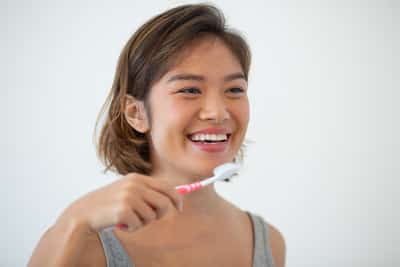Over Brushing Guide: Healthy Smile Solutions

The pursuit of a perfect smile can sometimes lead to overzealous oral hygiene habits, one of which is over brushing. While regular brushing is crucial for removing plaque, bacteria, and food particles from the teeth, doing it excessively can lead to more harm than good. Over brushing, or brushing too hard, can damage the gums, wear away the tooth enamel, and even lead to tooth sensitivity. In this comprehensive guide, we’ll delve into the world of over brushing, its consequences, and most importantly, provide you with healthy smile solutions to ensure your oral hygiene routine is both effective and safe.
Understanding the Consequences of Over Brushing
Before we dive into the solutions, it’s essential to understand the potential consequences of over brushing. These can include:
- Gingival Recession: Aggressive brushing can push the gums away from the teeth, exposing the roots and potentially leading to sensitivity and increased risk of decay.
- Tooth Enamel Erosion: The enamel is the hard, outer layer of the teeth. Over brushing, especially with a hard-bristled brush or excessive force, can wear away this protective layer, leading to sensitivity and potentially exposing the dentin underneath.
- Dentin Hypersensitivity: Once the enamel is worn away, the dentin (the layer beneath the enamel) can become exposed. Dentin contains tiny tubes that lead to the nerve of the tooth, and when it’s exposed, it can cause sharp pains when consuming hot or cold foods and drinks.
- Tooth Wear: Besides enamel erosion, over brushing can also lead to tooth wear, where the biting surfaces of the teeth become flat, affecting their ability to chew properly and altering the appearance of the smile.
Healthy Smile Solutions: How to Brush Right
Preventing the negative effects of over brushing starts with adopting the right brushing technique and habits. Here are some healthy smile solutions:
Choose the Right Brush: Opt for a soft-bristled toothbrush. Hard-bristled brushes are more likely to cause gum recession and tooth wear. Consider an electric toothbrush, as many come with pressure sensors that alert you if you’re brushing too hard.
Brush with Gentle circular Motions: Instead of scrubbing back and forth, use gentle circular motions to clean your teeth. This approach is less likely to cause damage to the gums and tooth enamel.
Don’t Overdo It: Brush your teeth for the recommended 2 minutes, twice a day. Over brushing can also mean brushing too frequently. Stick to the recommended schedule unless advised differently by your dentist.
Use the Right Amount of Toothpaste: Use a pea-sized amount of toothpaste. Too much toothpaste, especially if it’s highly abrasive, can contribute to enamel erosion when brushed aggressively.
Regular Dental Check-ups: Regular visits to your dentist can help identify early signs of over brushing. Your dentist can provide personalized advice on how to improve your brushing technique and recommend products that are safe for your teeth and gums.
Additional Tips for a Healthy Smile
In addition to proper brushing techniques, there are several other habits and products that can contribute to a healthy, beautiful smile:
Interdental Cleaning: Use floss or an interdental brush once a day to clean between your teeth, where a toothbrush can’t reach. This helps remove plaque and food particles that can cause decay and gum disease.
Mouthwash: Consider using a mouthwash that complements your toothpaste. Mouthwashes can help reduce plaque, prevent gingivitis, and freshen breath. However, always choose a mouthwash that carries the American Dental Association (ADA) Seal of Acceptance, indicating it has met standards for safety and effectiveness.
Dietary Choices: Limit sugary and acidic foods and drinks, as they can contribute to tooth decay and erosion. A balanced diet rich in fruits, vegetables, and whole grains can help support oral health.
Avoid Tobacco: Tobacco use can lead to bad breath, tooth discoloration, gum recession, and even oral cancer. Quitting tobacco can significantly improve your oral health and overall well-being.
Conclusion
Achieving a healthy, beautiful smile is not just about frequent brushing; it’s about brushing correctly and maintaining a comprehensive oral hygiene routine. By understanding the risks of over brushing and implementing healthy smile solutions, you can enjoy a confident smile while protecting your teeth and gums from potential damage. Remember, the key to a perfect smile is balance and moderation, combined with regular dental care and a commitment to your oral health.
What are the signs of over brushing?
+Signs of over brushing can include gum recession, tooth sensitivity, worn-down teeth, and visible roots. If you notice any of these, consult your dentist for advice on adjusting your brushing technique.
How often should I replace my toothbrush?
+You should replace your toothbrush every 3-4 months or sooner if the bristles become frayed. A worn-out toothbrush is less effective at cleaning your teeth and can potentially damage your gums.
Can over brushing lead to long-term oral health issues?
+Yes, over brushing can lead to long-term oral health issues such as persistent tooth sensitivity, increased risk of tooth decay due to exposed dentin and roots, and gum disease. Preventive measures and regular dental check-ups are crucial for early detection and treatment.
